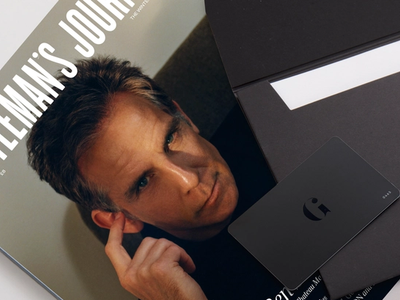The rise of 'Lifestyle Guy'
Not long ago I was sitting with a friend at the rooftop bar of a hotel in Barcelona. A man walked past clad in dark designer stubble, Jacques Marie Mage sunglasses and Loro Piana Summer Walks. Upon his shoulder, a Bottega Veneta weekend bag with its hallmark cross-hatching and white Airpods lodged in his ears. A dark blue shirt was unbuttoned to his sternum; a Rolex hung loosely on his wrist. Once he was safely out of earshot, my chum looked at me conspiratorially and uttered: “Lifestyle Guy!”
I hadn’t heard the term before, but I knew what he meant. From San Francisco to Seoul, a stratum of men has arisen. We’ll call them lifestyle guys. Just as dogs come to resemble their owners, so this international cohort has come to resemble its consumer habits. I had no idea where he was from, which languages he spoke, but I could make some educated guesses. He read the Financial Times, owned an iPhone, and liked techno but also hip-hop. He used Spotify, Netflix, Amazon, Apple, Instagram, possibly Twitter. He had seen or was at least aware of Chef’s Table and Money Heist. He followed football. He was not a stranger to business podcasts. He had recently eschewed skinny fit trousers for a more forgiving, wider leg. In the past year he had considered purchasing a pair of Adidas Sambas. He would own some basics from Uniqlo and some outerwear from the North Face or Arc’teryx. He drank tequila but also natural wine. He intermittently fasted. He exercised, routinely running at least 10k. He had an integrated speaker system at home and thought about watches beyond the one on his wrist.

His politics would err on the permissive side, as long as his personal bottom line was unaffected. His job paid well but was defensible at liberal dinner parties; at the cool end of something uncool – a VC focused on sustainability, perhaps – or the uncool end of something cool – the lawyer for an ad agency.
Social media has been an unprecedented boom time for lifestyle, both the reality and the images of it. Once upon a time, you could only gain a sense of someone by meeting them in person. As images have proliferated, through magazines, television and now social media, so too have the opportunities for lifestyle. The recent Netflix documentary, Martha, about Martha Stewart, told the story of one of the most influential figures in US women’s lifestyle. Now in her eighties, Stewart showed that her life could be enviable on every front; launching books, magazines and TV shows built solely around the idea of her. Gwyneth Paltrow and the Kardashians have followed suit.
The boys were slower to catch on, but they are up to speed now. Men’s lifestyle magazines did not get going until the 1980s. It was this vision of a certain kind of elite urban homogeneity that was skewed by Bret Easton Ellis so brutally in American Psycho. Patrick Bateman obsesses over his Turnbull & Asser shirts and Phil Collins records, unaware of how strikingly dull he seems. The famous scene in which Bateman worries about his business card is a case in point: near-identical men fretting over trivia, the narcissism of microcosmic differences.

Instead of individual gurus, however, today there are algorithmic recommendations, those faceless oracles guarding what the writer Kyle Chayka has called ‘Filterworld’, where coffee shops, boutiques, bars and restaurants increasingly look the same in every major city. In place of individual taste, we have given way to computer recommendations based on what everyone else is having, which leads to more of the same. You might call it ‘algorexia’: the cultural starvation of everyone having the same inputs.
Where I live in London, the men afflicted by this condition are even more closely definable, visible by our Birkenstocks and New Balance, pints of Guinness and bookings at The Devonshire or The Camberwell Arms, tickets for Glastonbury and summer holidays in Athens or Marseille. They all follow the Menswear Guy and the Real Housewives of Clapton, listen to the same podcasts (How Long Gone and, guiltily, The Rest is Politics), watch the same programmes (I Think You Should Leave, Industry). They stare at their chore coats in the cupboard and wonder if they are cool again. We are all Buzz Lightyear in the shop, looking up at all the other Buzz Lightyears.
This article appeared in the winter 2024 issue of Gentleman's Journal. Read more about the issue here...

Become a Gentleman’s Journal Member?
Like the Gentleman’s Journal? Why not join the Clubhouse, a special kind of private club where members receive offers and experiences from hand-picked, premium brands. You will also receive invites to exclusive events, the quarterly print magazine delivered directly to your door and your own membership card.